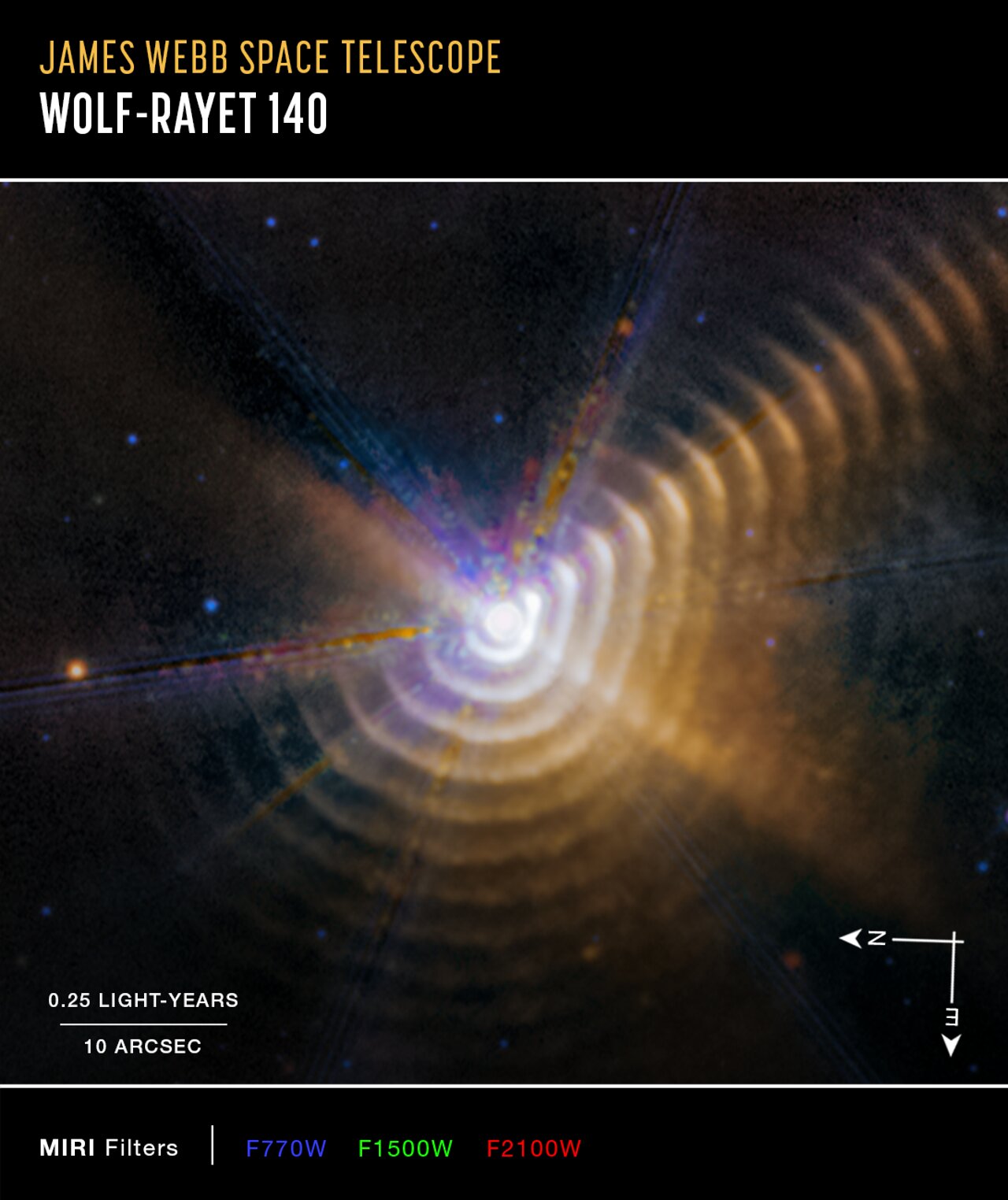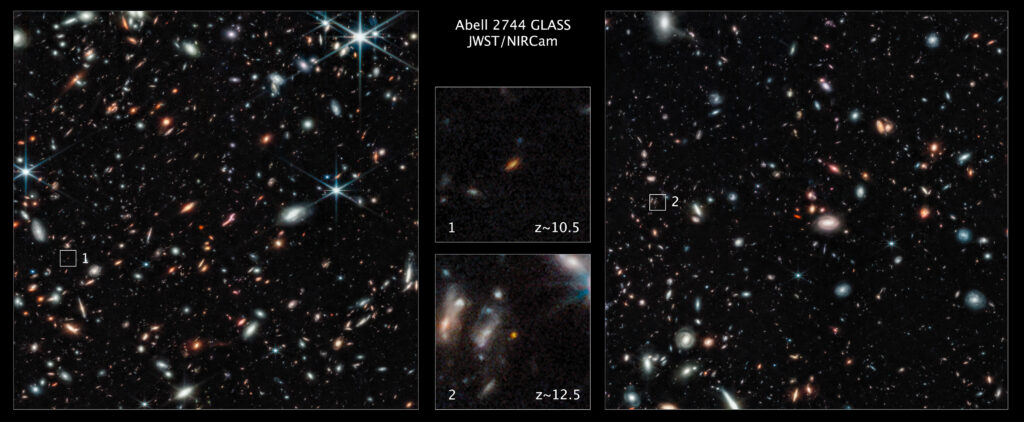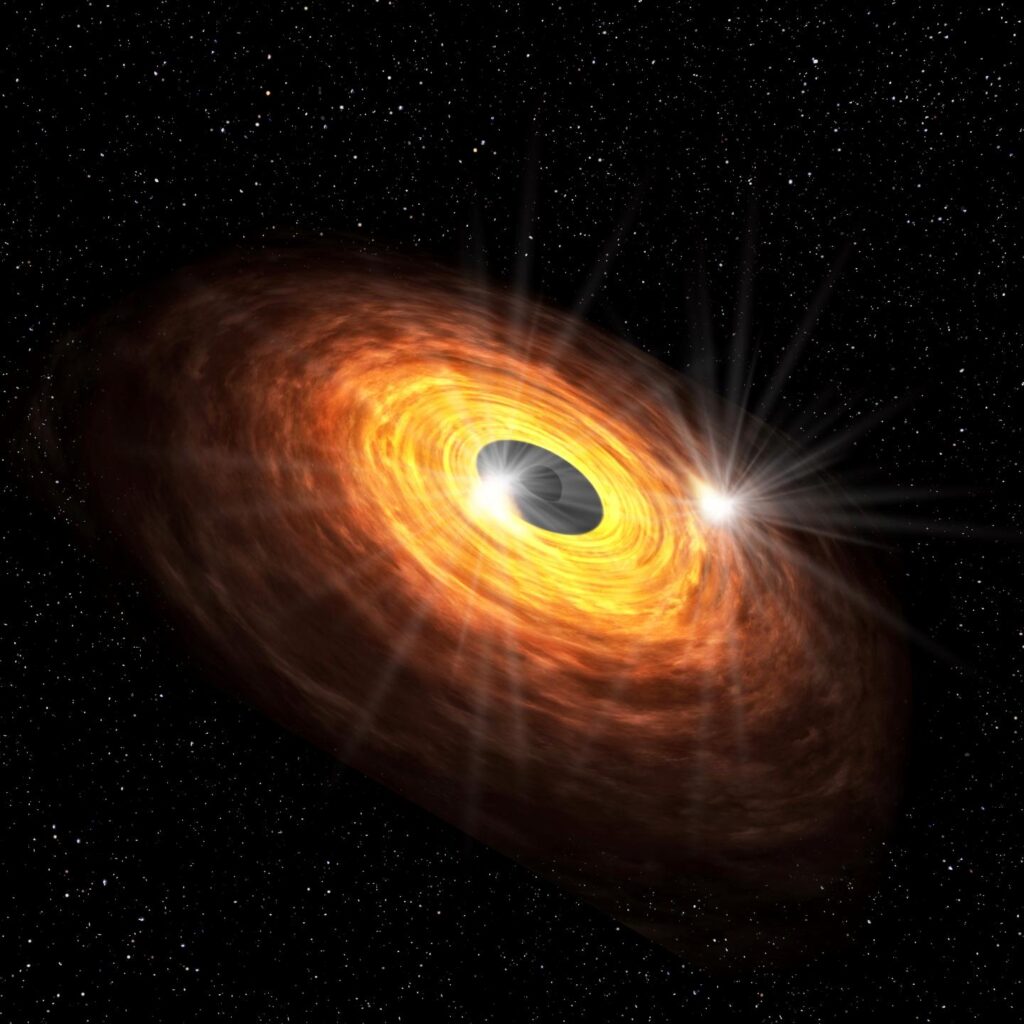Webb watches Wolf-Rayet 140: carbon-rich dust shells form, expand in star system
Astronomers using the NASA/ESA/CSA James Webb Space Telescope have identified two stars responsible for generating carbon-rich dust a mere 5000 light-years away in our own Milky Way galaxy. As the massive stars in Wolf-Rayet 140 swing past one another on their elongated orbits, their winds collide and produce the carbon-rich dust. For a few months every eight years, the stars form a new shell of dust that expands outward — and may eventually go on to become part of stars that form elsewhere in our galaxy.
Astronomers have long tried to track down how elements like carbon, which is essential for life, become widely distributed across the Universe. Now, the James Webb Space Telescope has examined one ongoing source of carbon-rich dust in our own Milky Way galaxy in greater detail: Wolf-Rayet 140 [1], a system of two massive stars that follow a tight, elongated orbit.
As they swing past one another (within the central white dot in the Webb images), the stellar winds from each star slam together, the material compresses, and carbon-rich dust forms. Webb’s latest observations show 17 dust shells shining in mid-infrared light that are expanding at regular intervals into the surrounding space.
“The telescope confirmed that these dust shells are real, and its data also showed that the dust shells are moving outward at consistent velocities, revealing visible changes over incredibly short periods of time,”
said Emma Lieb, the lead author of the new paper and a doctoral student at the University of Denver in Colorado.
Every shell is racing away from the stars at more than 2600 kilometres per second, almost 1% the speed of light.
“We are used to thinking about events in space taking place slowly, over millions or billions of years,” added Jennifer Hoffman, a co-author and a professor at the University of Denver. “In this system, the observatory is showing that the dust shells are expanding from one year to the next.”
“Seeing the real-time movement of these shells between Webb’s observations that were taken only 13 months apart is truly remarkable,” said Olivia Jones, a co-author at the UK Astronomy Technology Centre, Edinburgh. “These new results are giving us a first glimpse of the potential role of such massive binaries as factories of dust in the Universe.”
Like clockwork, the stars’ winds generate dust for several months every eight years, as the pair make their closest approach during a wide, elongated orbit. Webb also shows where dust formation stops — look for the darker region at top left in both images.
The telescope’s mid-infrared images detected shells that have persisted for more than 130 years (older shells have dissipated enough that they are now too dim to detect). The researchers speculate that the stars will ultimately generate tens of thousands of dust shells over hundreds of thousands of years.
“Mid-infrared observations are absolutely crucial for this analysis, since the dust in this system is fairly cool. Near-infrared and visible-light observations would only show the shells that are closest to the star,” explained Ryan Lau, a co-author and astronomer at NSF NOIRLab in Tucson, Arizona, who led the initial research about this system. “With these incredible new details, the telescope is also allowing us to study exactly when the stars are forming dust — almost to the day.”
The distribution of the dust isn’t uniform. Though these differences aren’t obvious in Webb’s images, the team found that some of the dust has ‘piled up’, forming amorphous, delicate clouds that are as large as our entire Solar System. Many other individual dust particles float freely. Every speck is as small as one-hundredth the width of a human hair. Clumpy or not, all of the dust moves at the same speed and is carbon rich.
The future of this system
What will happen to these stars over millions or billions of years, after they have finished ‘spraying’ their surroundings with dust? The Wolf-Rayet star in this system is 10 times more massive than the Sun and nearing the end of its life. In its final ‘act’, this star will either explode as a supernova — possibly blasting away some or all of the dust shells — or collapse into a black hole, which would leave the dust shells intact.
Though no one can predict with any certainty what will happen, researchers are rooting for the black hole scenario.
“A major question in astronomy is, where does all the dust in the universe come from?” Lau said. “If carbon-rich dust like this survives, it could help us begin to answer that question.”
“We know carbon is necessary for the formation of rocky planets and solar systems like ours,” Hoffman added. “It’s exciting to get a glimpse into how binary star systems not only create carbon-rich dust, but also propel it into our galactic neighborhood.”
These results have been published in the Astrophysical Journal Letters and were presented in a press conference at the 245th meeting of the American Astronomical Society in National Harbor, Maryland.
Notes
[1] A Wolf-Rayet star is born with at least 25 times more mass than our Sun and is nearing the end of its life, when it will likely collapse directly to black hole, or explode as a supernova. Burning hotter than in its youth, a Wolf-Rayet star generates powerful winds that push huge amounts of gas into space. The Wolf-Rayet star in this particular pair may have shed more than half its original mass via this process.
Press release from ESA Webb.























